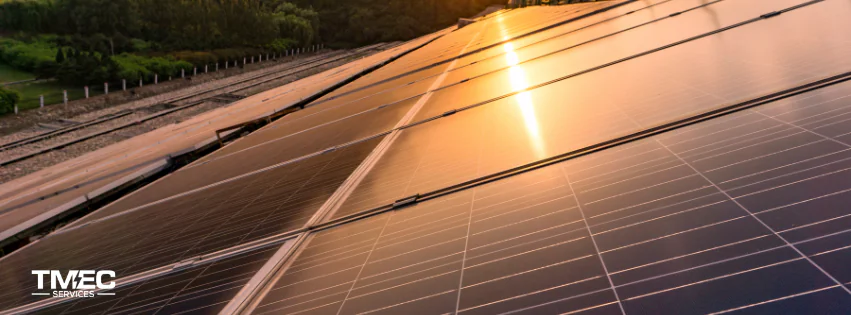If you’re considering installing solar panels in your home or business, one of the first things you’ll want to understand is how solar rebates are calculated in Australia. Solar rebates can significantly reduce your upfront costs—and when used strategically, they can help you achieve energy independence sooner than you might think.
Whether you’re looking for solar rebates in Australia or you’re exploring solar rebates on the Sunshine Coast, this complete guide will break down how these incentives work, who qualifies, and how much you can potentially save in 2025.
What Is a Solar Rebate?
A solar rebate in Australia is a government-backed financial incentive that lowers the cost of purchasing and installing a solar energy system. Rather than receiving a direct cash payout, these rebates are typically applied as an upfront discount on your solar system quote, thanks to something called Small-scale Technology Certificates (STCs).
These rebates aim to:
- Encourage the shift to clean energy
- Reduce the financial burden on households
- Support Australia’s goal of net-zero emissions by 2050
If you’ve been wondering what is a solar rebate, it’s essentially a credit scheme that makes renewable energy more affordable for Aussie families.

How Solar Rebates in Australia Are Calculated
Let’s break it down.
1. Based on System Size
The larger your system (measured in kilowatts), the more STCs you’ll be eligible to receive. For instance:
- A 6.6kW solar system may generate around 90–100 STCs.
- A 10kW system may be eligible for over 130 STCs.
The more STCs, the bigger your solar rebates in Australia.
2. Based on Your Location
Australia is divided into four climate zones for STC purposes. Each zone has a different solar generation potential.
- Zone 1 (best sun exposure): e.g., Darwin
- Zone 2: e.g., Brisbane, Sunshine Coast
- Zone 3: e.g., Sydney, Adelaide
- Zone 4: e.g., Hobart, Melbourne
On the Sunshine Coast, you’re in Zone 2, which means your solar panels generate more renewable energy—and that means more STCs and bigger rebates.
3. Based on Installation Year
The number of years remaining until the federal scheme ends in 2030 affects the calculation. The closer we get to 2030, the fewer STCs you receive.
So in 2025, you’ll get more STCs than someone installing in 2027. This system is known as the “deeming period”.
4. Based on STC Market Value
Each STC has a dollar value (usually $35–$40), which fluctuates based on supply and demand in the market.
Simple Formula:
Total Rebate = Number of STCs × Current STC Price
Example: Sunshine Coast Solar Rebate Calculation (2025)
Let’s say you install a 6.6kW solar system on the Sunshine Coast.
- You’re eligible for 90 STCs (Zone 2)
- The market value of STCs is $36.50
Rebate = 90 × $36.50 = $3,285
That’s a significant discount, and it’s available upfront. So if your full system cost was $7,500, you would only pay around $4,215 after rebates.
Who Qualifies for Solar Rebates in Australia?
✔️ Property owner (home or business)
✔️ Installing an approved solar panel system (under 100kW)
✔️ Using a Clean Energy Council (CEC)-approved installer
✔️ Installation is completed within 12 months of STC creation
At TMEC Services, we only use CEC-accredited installers—ensuring your eligibility for all solar rebates in Australia, including Sunshine Coast solar incentives.
Solar Rebates in Australia by State (2025)
In addition to the federal solar rebate scheme, some states offer extra incentives or rebates for batteries and low-income households.
Solar Rebates on the Sunshine Coast: Are You Missing Out?
The Sunshine Coast is one of Australia’s prime locations for solar installations. With high sun exposure, favorable climate, and easy access to STC rebates, there’s no better time to make the switch.
Why Sunshine Coast Residents Benefit More:
- Longer sun hours = higher solar output
- Zone 2 rating = more STCs per kilowatt installed
- Local experts like TMEC can guide you through the rebate process
Whether you’re in Buderim, Peregian Springs, or Mooloolaba—your Sunshine Coast solar rebate could save you thousands.
Benefits of Solar Rebates in Australia
Lower upfront cost
Faster return on investment
Lower energy bills long-term
Increased property value
Reduced carbon footprint
Frequently asked questions
Can I get a solar rebate if I already have panels?
Generally, no—but you may qualify if you’re adding more capacity or installing a battery.
Is the rebate cash in hand?
No. It’s applied as a discount at the point of sale through your installer.
How long will solar rebates last in Australia?
Are solar rebates the same everywhere?
No. Solar rebates in Australia vary by state, with different add-ons like loans, grants, or feed-in tariffs.
Final Thoughts: Why Act Now?
Waiting can cost you more. Every year, the STC rebate decreases—so locking in your solar system today means you’ll maximise your savings. For homeowners and businesses on the Sunshine Coast, your location gives you a unique advantage.
At TMEC Services, we’re experts in helping locals secure every eligible rebate and get the best return on their solar investment.
Ready to Claim Your Solar Rebate on the Sunshine Coast?
TMEC Services provides:
✔️ CEC-approved solar panel installations
✔️ Full rebate assistance
✔️ System design tailored to your energy use
✔️ Clean Energy compliance and warranties
✔️ Local support from a Sunshine Coast-based team
Contact us today for a free quote
We’ll calculate your exact solar rebate—no jargon, just savings.

